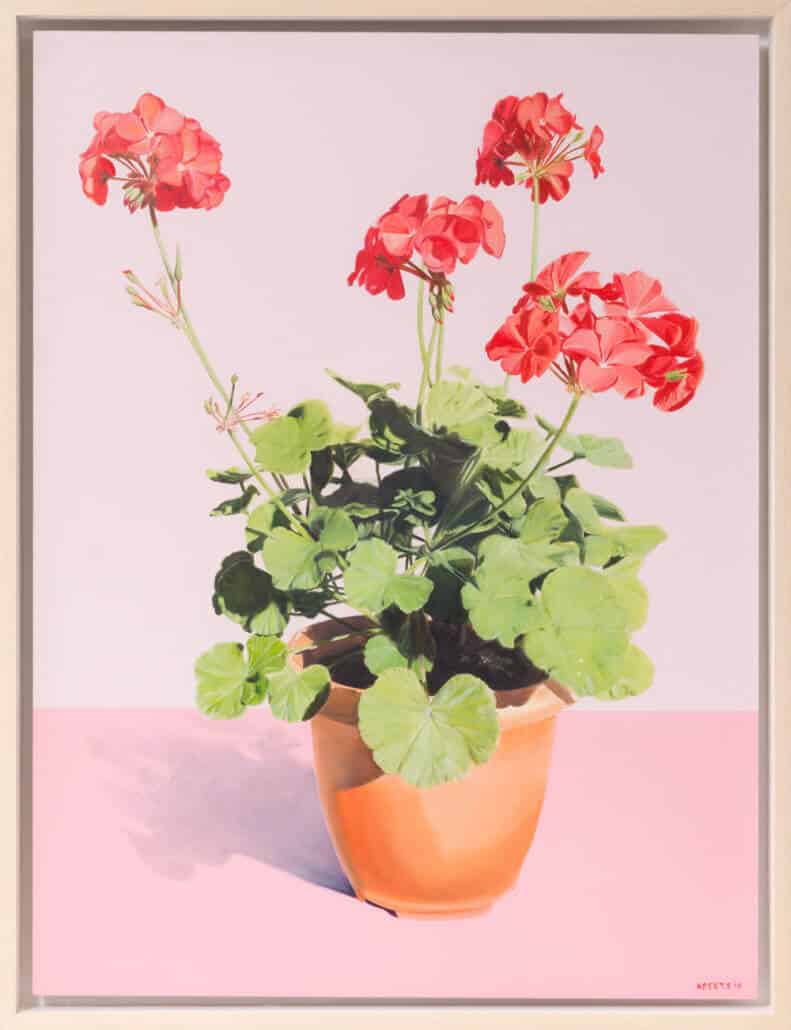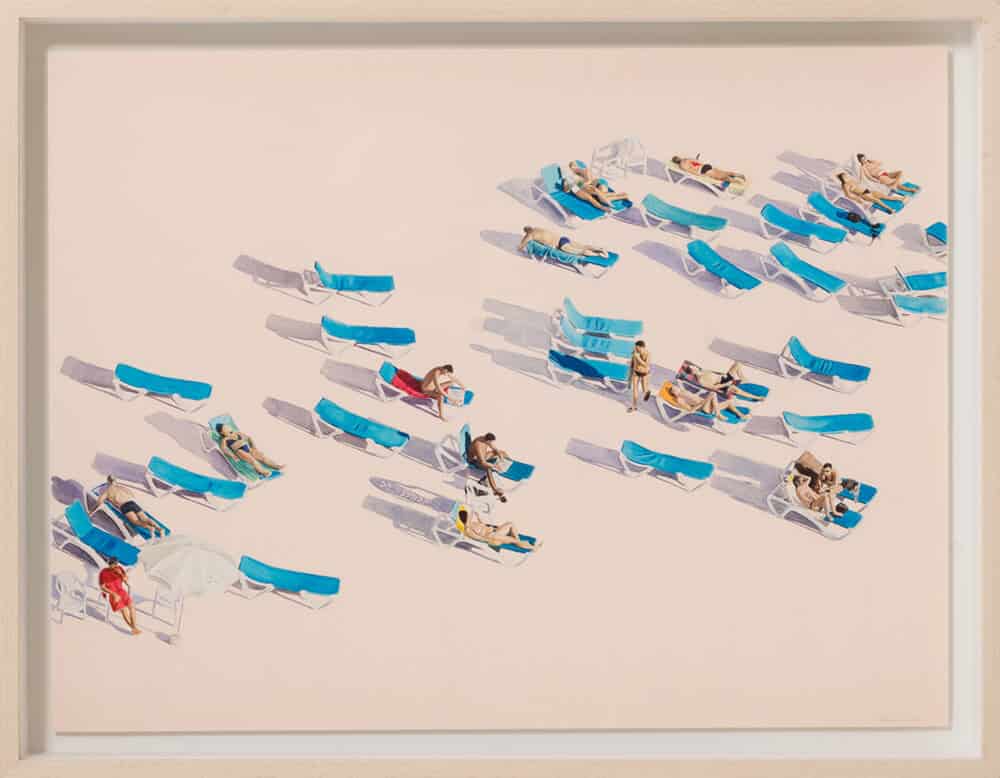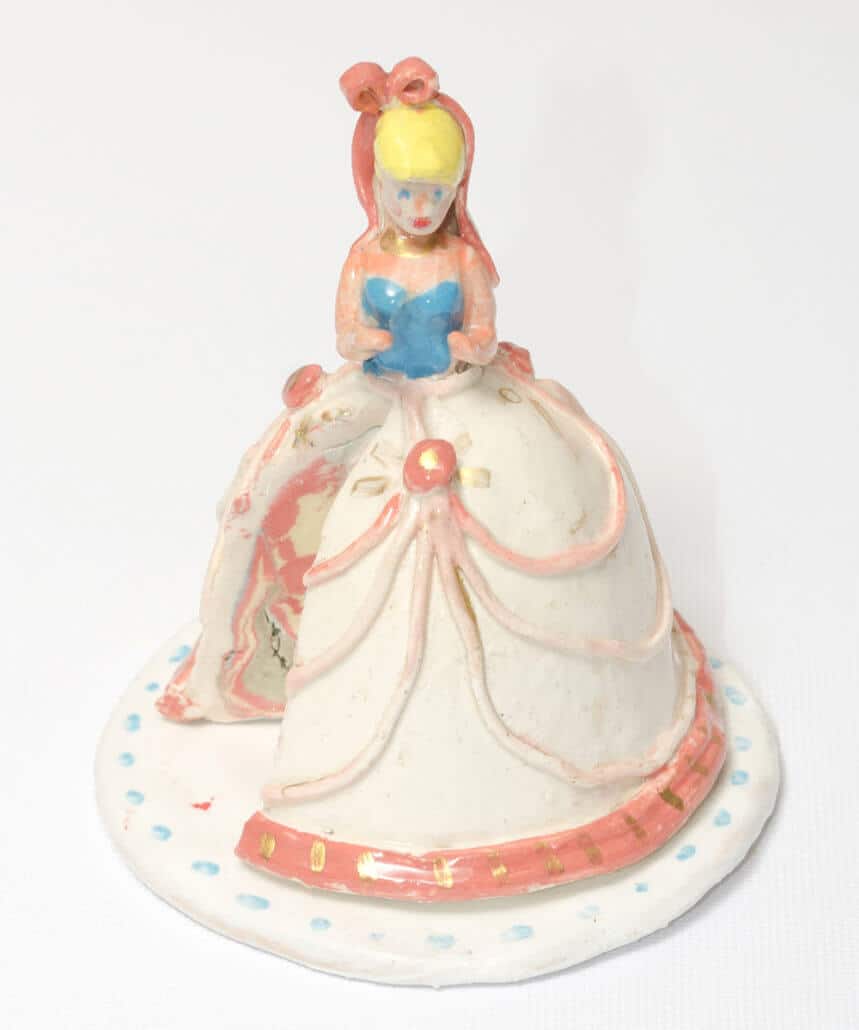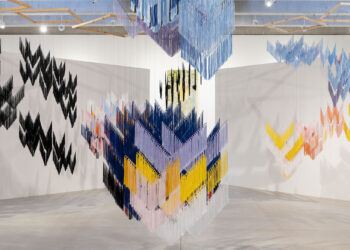“HEAR and attend and listen; for this befell and behappened and became and was, O my Best Beloved, when the Tame animals were wild.”
The Cat that Walked by Himself, Just So Stories (1902) by Rudyard Kipling.
Wildness is not an immediately apparent theme in the works of Kirsten Beets’ latest solo exhibition Dreamland. Her ongoing investigation into our human relationship with the natural world imaginatively comments on the distancing between people and the wildness of the natural world. Consistent with her oeuvre is a summer hotness that haunts her scenes. Beets consciously uses this sense of lethargy as a strategy for constructing safe moments for viewing and dreaming. She describes her works as ‘dreamy versions of real place.’ In the space of Dreamland, Beets explores the possibility that a taming of place, plant and species in human leisure spaces has done little to suppress the natural wildness in all things.
It is in human leisure spaces that Beets particularly sees the natural as having been interfered with in order to serve mankind. One could call this a domestication of space. Biologist Jared Diamond makes the observation that a process of simply keeping wild animals in captivity does not indicate that the species or the individual animal has been domesticated (2002). A domesticated animal is defined as one whose natural wildlife cycle has been interfered with in order to serve humankind. Beets draws our attention to this domestication of space, plant and animal by her act of dreaming the wild back into ordinary spaces of being.
 Kirsten Beet, Thrive, 2018. Oil on board, 540 x 415mm, framed. Image courtesy of Salon91.
Kirsten Beet, Thrive, 2018. Oil on board, 540 x 415mm, framed. Image courtesy of Salon91.
In looking at Beets’ visions of domestic life, one begins to notice the symbols of wildness that permeate her scenes. The tigers, lions and cheetahs in Cat Lady function as a symbolic comment on the figure of the woman. Coupled with a Delicious Monster, the quintessential indoor plant that, left to its own, will outgrow any pot or containment, one sees that Beets’ is rather commenting on the stereotyping of domestication that permeates human society. The sad, unfulfilled life of a stereotypical Cat Lady is here subverted to suggest an agency attached to a wild turn. Rather than a societal disappointment, Beets’ Cat Lady lives in kinship with a pride of wild cats. In her wry way, Beets suggests that it is historical conventions of womanhood that have departed from a natural state of being, conventions that have been recognised in recent years as stifling of gender and identity. The topiary too may be heralded as a high symbol of the containment and domestication of plants, in Tiger in the Topiary Beets’ symbolic tiger roams this space to cue us into an imagined instability of the containment of the tamed plant kingdom. Similarly, in her plant images of greenhouses, potted geraniums and bougainvillea (the latter two being common Cape Town suburban plants) we are left to muse on containment in both place and depiction of the once wild. ‘Geraniums make you feel like a good gardener,’ Beets muses. They are emblematic of a domestic plant valued for its resilience to survive even the most neglectful of gardeners.
Where people do appear in her images, they remain contained by the flat colour planes of pink and blue, safely engaging in leisure activities within spaces prescribed for that use. The tidal pools along the coast of Cape Town function as a safe sea experience. Beets’ description of them as geometric shapes hovering in the undefined space of the white picture plane reminds a viewer of the artificiality of the scene.
 Kirsten Beets, In Broad Daylight, 2018. Oil on paper, 365 x 465mm, framed. Image courtesy of Salon91.
Kirsten Beets, In Broad Daylight, 2018. Oil on paper, 365 x 465mm, framed. Image courtesy of Salon91.
Beets, as an artist has also expanded her media in this exhibition by including her first watercolour monotypes. These succeed in disrupting the photorealism of her oil paintings in a dream-like use of vivid colour and loose marks. They realise a hazy sense of scenes seen through the memory of place or the summer laziness of looking at the world through polarized sunglasses. She also includes ceramic works for the first time. These populate the gallery like the imaginative elements in her paintings, adding vivid colour and a wry humour to the gallery space. Rude mermaids blowing chewing-gum bubbles, hybrid animals from an imaginary otherworld, smiling ghosts and inedible cakes populate the gallery space in a celebration of the uncontained creative imagination. Marking a creative and imaginative break from the photorealism of her oil painting, these new media demonstrate an artist in touch with and celebrating the material nature of clay and print.
Beets’ oil paintings continue to play with illusion. In The Captain a swan drifts elegantly over a large picture plane that fragments from photorealism into abstract marks at the fringes of the image. Here, as in her subjects, there is a quiet wild moment of disruption in the domesticated plane of the image itself.
 Kirsten Beets, Barbie Cake and Stand, 2018. Ceramic, variable dimensions. Image courtesy of Salon91.
Kirsten Beets, Barbie Cake and Stand, 2018. Ceramic, variable dimensions. Image courtesy of Salon91.
What Beets’ Dreamland enables is an imaginative return to the wild in spaces where such a notion is so apparently absent. Her imaginative interjections into ordinary life make the everyday a little more remarkable. In both subjects and medium, we see a playful comment on spaces and people at leisure and a gentle disruption of assumptions of tameness within contemporary society. Like the cat, in Rudyard Kipling’s Just So Stories there is perhaps a desire in all things to go back to the wet wild woods, waving our wild tail and walking by our wild lone.
Kirsten Beets’ latest exhibition, Dreamland, will be on view at Salon Ninety One until the 4th of August 2018. See the exhibition at number 91 Kloof Street, Cape Town, South Africa. For further information please contact +27 21 424 6930 or visit our website www.salon91.co.za
Natasha Norman is a Cape Town based Artist, Arts Writer and Lecturer.



